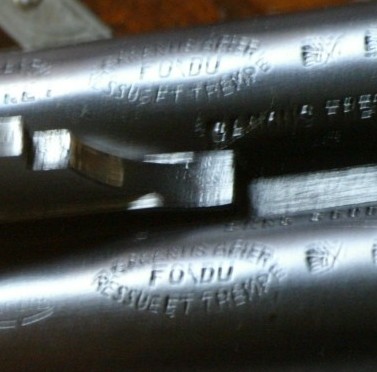
The Dye check
The Dye check method ("ressuage" in French) allows detecting flaws and cracks at the surface of a given material.
The method can be applied to any material, regardless of its physical properties, as long as the surface is non-absorbing.
The method consists in applying a highly penetrating liquid on the surface. That liquid, which is often red or fluorescent, infiltrates by capillarity into the possible cracks.
After having been allowed the time to work advised by the producer and/or the nature of the flaws to be detected, the excess of liquid is washed away. Then the surface is dried and a "revelator" is applied; the latter acts as a pump and pulls the red product out of the cracks, allowing for a precise location.
In the past, railroad workers used black oil to detect flaws and cracks in the tracks, and talc powder as a revelator.
So if you happen to see the mention "Ressué" on a barrel, you will know it has been controlled by that method in order to check its homogeneity.
Alain
